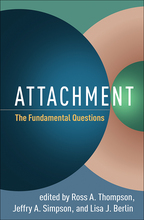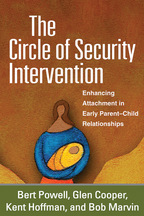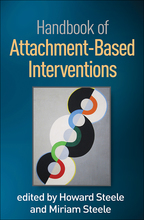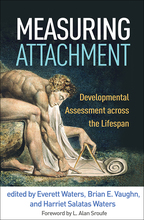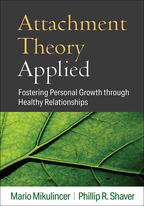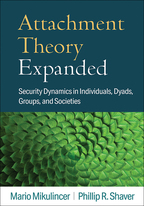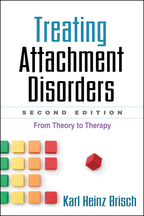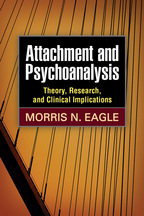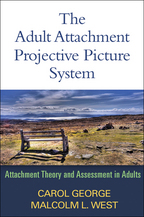Patterns of Relating
An Adult Attachment Perspective
Malcolm L. West and Adrienne E. Sheldon-Keller
Hardcover
Hardcover
orderApril 8, 1994
ISBN 9780898626711
Price: $46.00 210 Pages
Size: 6" x 9"
Theories of adult attachment provide new perspectives for understanding, studying, and changing an adult's ability to form life-sustaining personal relationships. Asserting that patterns of social and asocial behavior are strategies for coping with issues of attachment, the authors demonstrate the unique merits of adult attachment theory both as a means for investigating social behavior and as a construct to guide clinical practice. Describing the characteristics and role of attachment in the adult years, the volume offers authoritative exposition of the essential concepts of attachment theory and presents thoughtful and creative proposals for its further development. As such, this illuminating work represents an important first step toward the classification of adult attachment theory as a field of study in its own right.
The book first defines reciprocal attachment relationships for adults using criteria that are congruent with the definition for infants and children. Detailed case studies illustrate the clinical relevance of attachment as an organizational construct, and principles currently used to explain biological development are applied to the study of personality development. Discussing the view that models of attachment always have affective content, the authors explain that these models are centered around a pattern of feelings that can be observed throughout the individual's life.
In an insightful examination of insecure attachment, the book shows how these feelings are inevitably associated with the feared loss of security invested in the attachment relationship, then explores defensive processes from an attachment perspective. The authors describe their methodologies for assessing both the underlying dimensions of adult reciprocal attachment and the primary patterns of insecure attachment. They discuss the contribution of patterns of insecure attachment to the differential diagnosis of a subset of personality disorders. Demonstrating how attachment theory can be used to guide psychotherapy, the book also points out that attachment theory can be useful in indicating when psychotherapy has been effective. Finally, important distinctions are drawn between adult reciprocal attachment and other interpersonal constructs such as dependency, romantic love, and social support.
An ideal introduction to adult attachment theory, this volume provides a powerful tool for both social research and therapeutic intervention. As such, it will be welcomed by researchers, clinicians, and students interested in the ways adult relationships affect mental health.
The book first defines reciprocal attachment relationships for adults using criteria that are congruent with the definition for infants and children. Detailed case studies illustrate the clinical relevance of attachment as an organizational construct, and principles currently used to explain biological development are applied to the study of personality development. Discussing the view that models of attachment always have affective content, the authors explain that these models are centered around a pattern of feelings that can be observed throughout the individual's life.
In an insightful examination of insecure attachment, the book shows how these feelings are inevitably associated with the feared loss of security invested in the attachment relationship, then explores defensive processes from an attachment perspective. The authors describe their methodologies for assessing both the underlying dimensions of adult reciprocal attachment and the primary patterns of insecure attachment. They discuss the contribution of patterns of insecure attachment to the differential diagnosis of a subset of personality disorders. Demonstrating how attachment theory can be used to guide psychotherapy, the book also points out that attachment theory can be useful in indicating when psychotherapy has been effective. Finally, important distinctions are drawn between adult reciprocal attachment and other interpersonal constructs such as dependency, romantic love, and social support.
An ideal introduction to adult attachment theory, this volume provides a powerful tool for both social research and therapeutic intervention. As such, it will be welcomed by researchers, clinicians, and students interested in the ways adult relationships affect mental health.

